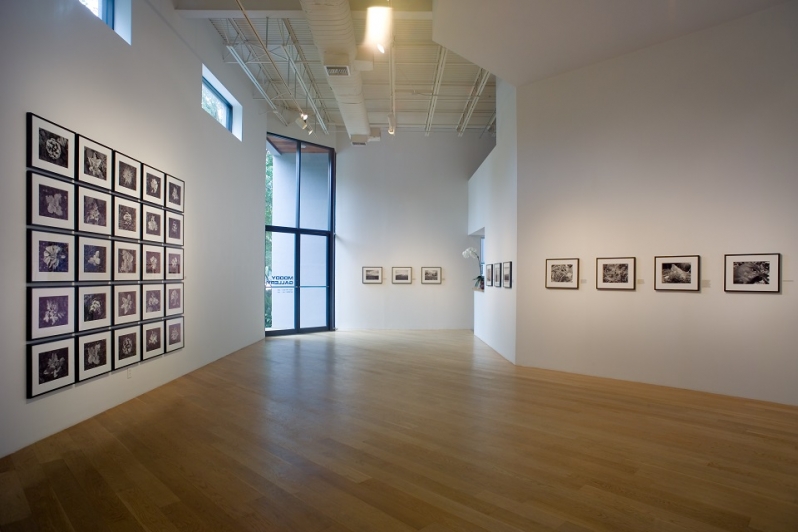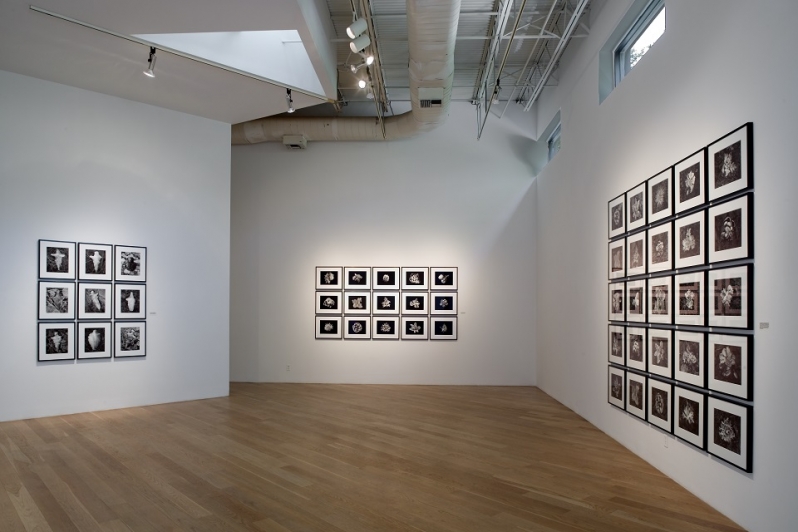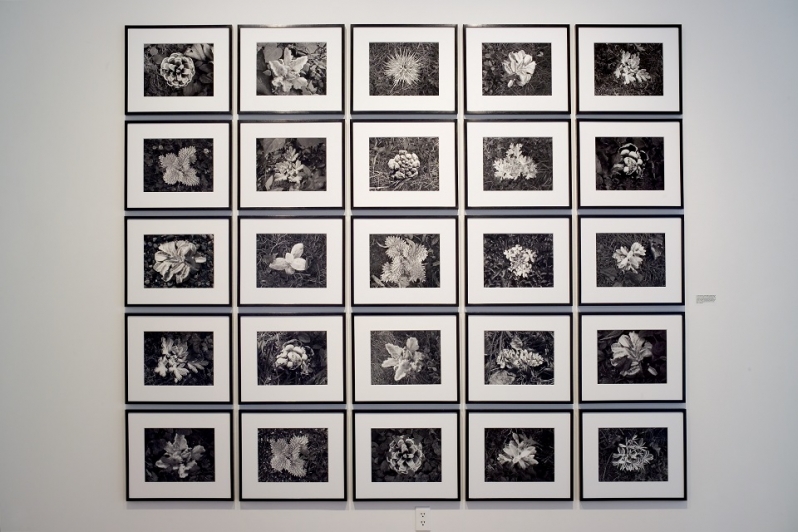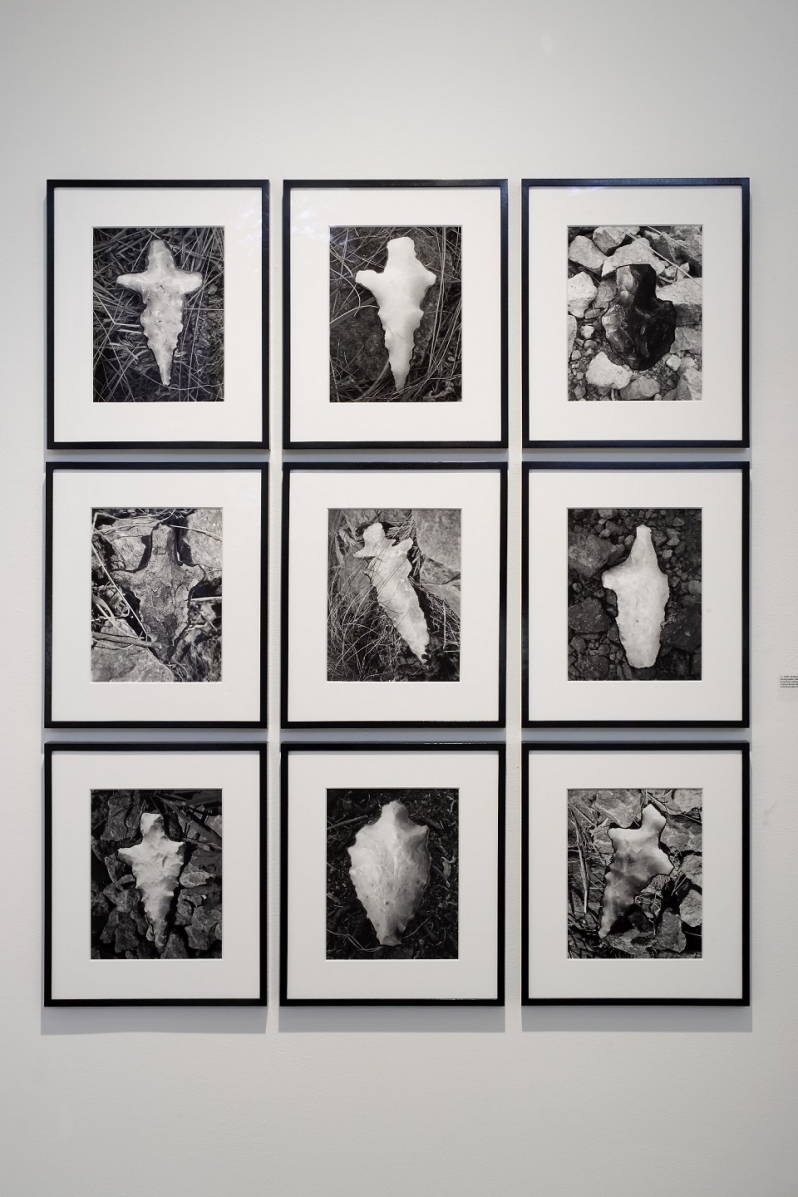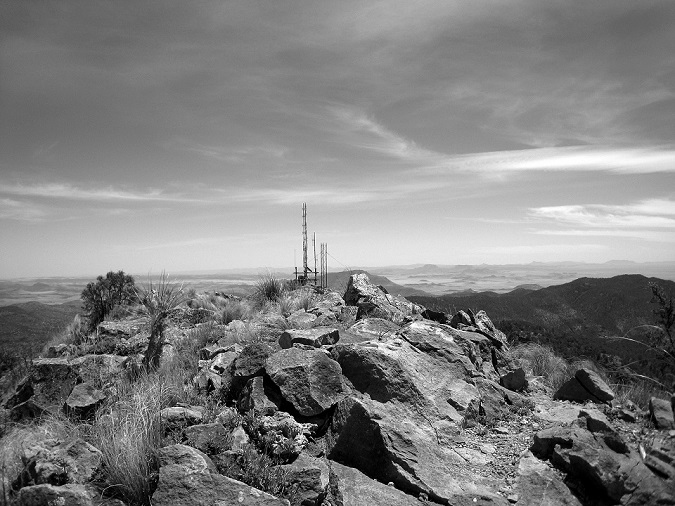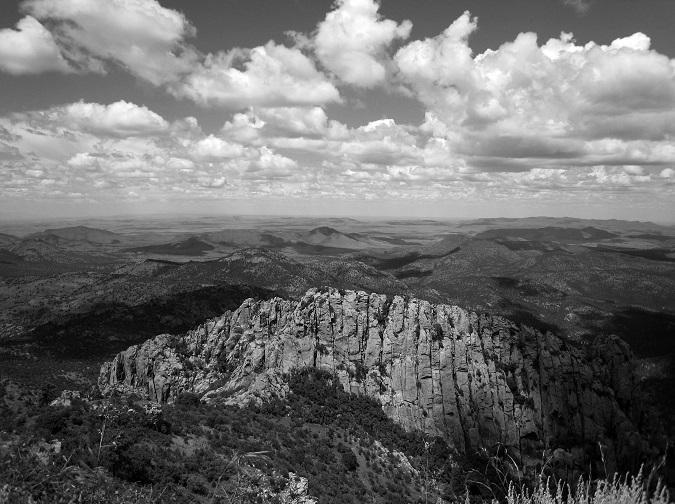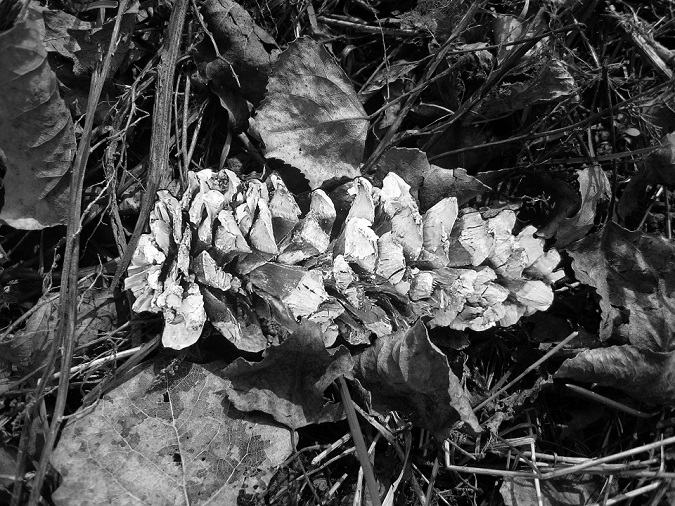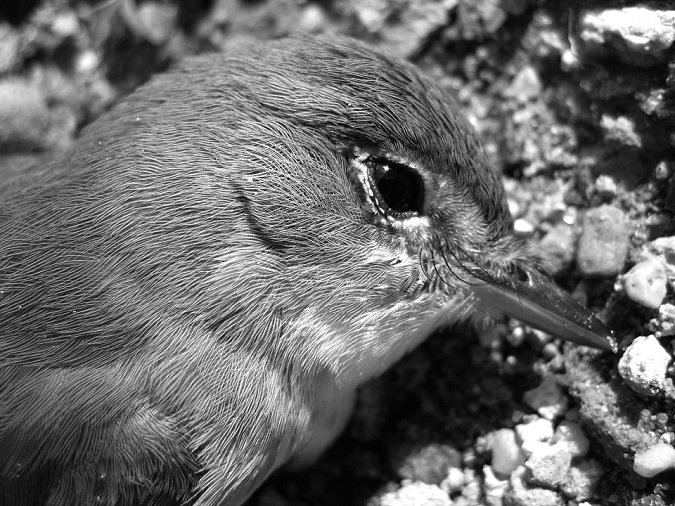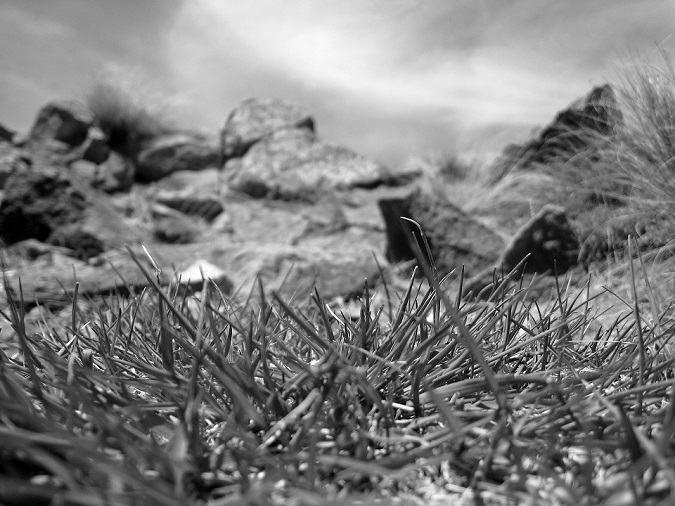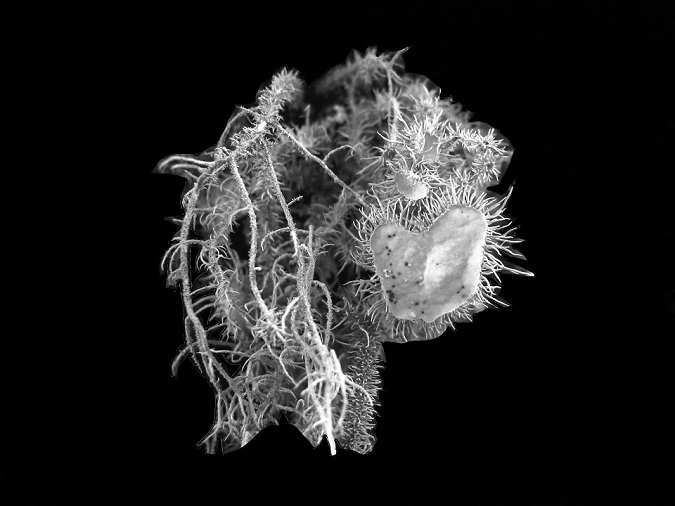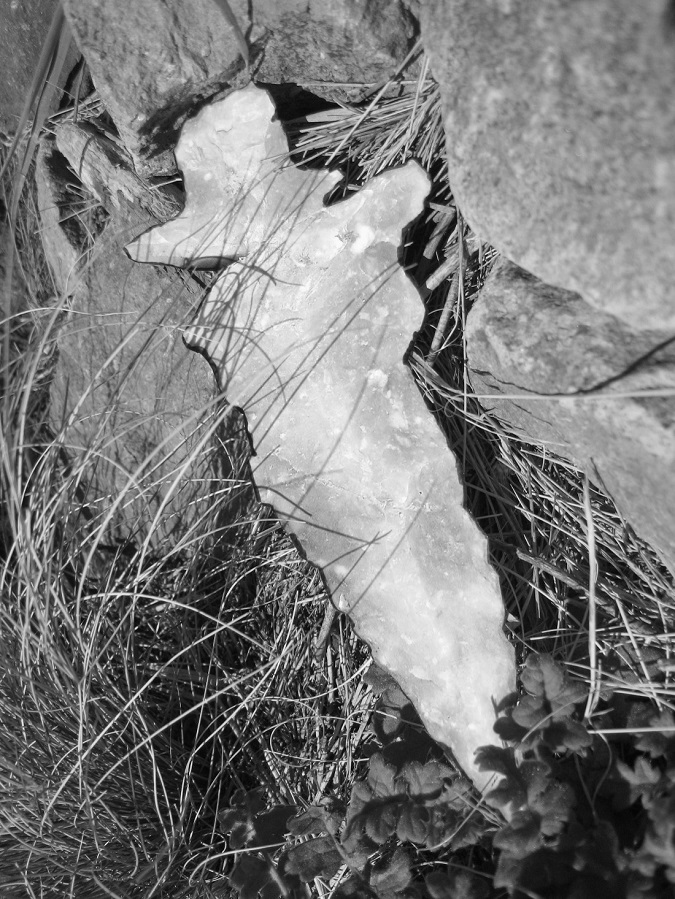Slight Disturbances
Moody Gallery, Houston, TX
2008
B/W photographs
"Slight disturbances" is a term used by Border Patrol Trackers to describe "sign" when in pursuit in the field. Trackers do not look for footprints but for slight disturbances on the ground—a moved pebble or a bent blade of grass.
Mount Livermore is a mountain that I look at daily from my studio window in Marfa, Texas and a landmark for undocumented workers and drug traffickers backpacking from Mexico to pick up points beyond. For thousands of years, people have migrated through the Mount Livermore area. Stone carvings, cave paintings, and arrowheads litter the area. Recently an archeological team dug straight down from one campsite through 5,000 years of layers of ash from campfires. Current drug corridors were prohibition corridors in the 1920’s and 30’s. Before that they were paths for indigenous people. People continue this migration through the mountains, canyons and high desert plains.
I set up an interview with a retired Border Patrol Tracker that resulted in tracking lessons, information about drug corridors in the area, and a conversation about the topological significance of Mount Livermore. Since then I have worked with the Border Patrol, the Nature Conservancy, a former moon rock curator at NASA, the lead archeologist at Sul Ross University, the director and the lead botanist for the Davis Mountain Preserve of the Nature Conservancy, an engineer from the McDonald Observatory, other naturalists, a pilot, and a holographic designer of military holograms.
Many historical moments, technological stages, and political agendas converge at this site. Mount Livermore is designated a "sky island" by the Nature Conservancy. A "sky island" is a mountain ecosystem that is isolated by valleys and/or deserts and contains species that are unique in the surrounding area. Scientists and environmentalists study the unique flora and fauna on the mountain. Archeology teams have conducted digs on and in the shadow of the mountain uncovering artifacts thousands of years old. Several decades ago, surveyors from a National Geodetic Survey team occupied the peak to measure distances to both McDonald Observatory and Organ pass located in New Mexico. They measured the exact location of the 107-inch Telescope in order for the data collected by the Lunar Laser Ranging Project to be more meaningful. It is the oldest “living” Apollo project. And currently an antenna at the peak is used by the Border Patrol to receive and transmit information from thousands of sensors in the area. The antenna is also used for emergency broadcasts.
This series unfolds the multivalence of the landscape through an exploration of figure-ground relations. Such relations are far from being fixed or static. Gestalt is a continuously moving and changing experiences.
The work is divided into two sections. The first contains individual prints that create an evolving narrative. The second section contains several "Collections" of objects in grid formats. I have focused on the visual representation of changing events on one mountain. For instance, one collection of nine photographs investigates the subject of archeology on the mountain. In 1895, a cache of around two thousand arrowheads (approximately 1,500 years old) was discovered at the peak of Mount Livermore. Most of the arrowheads are now in the Archeology Department of Sul Ross University. I photographed the arrowheads in the University lab. After printing out the photos, I cut out the arrowhead images from the background. Then I backpacked to the peak, returning the images of the arrowheads to the original site and re-photographed them. In another collection of photos, I enlarged and printed out images of individual plants taken while hiking Livermore. After cutting the image from its background I placed the image of the Livermore plant in New York’s Central Park and re-photographed it. Later I re-photographed the plant images in the Summer Garden of Peter I in St. Petersburg, Russia and Mauer Park, Berlin, Germany.
